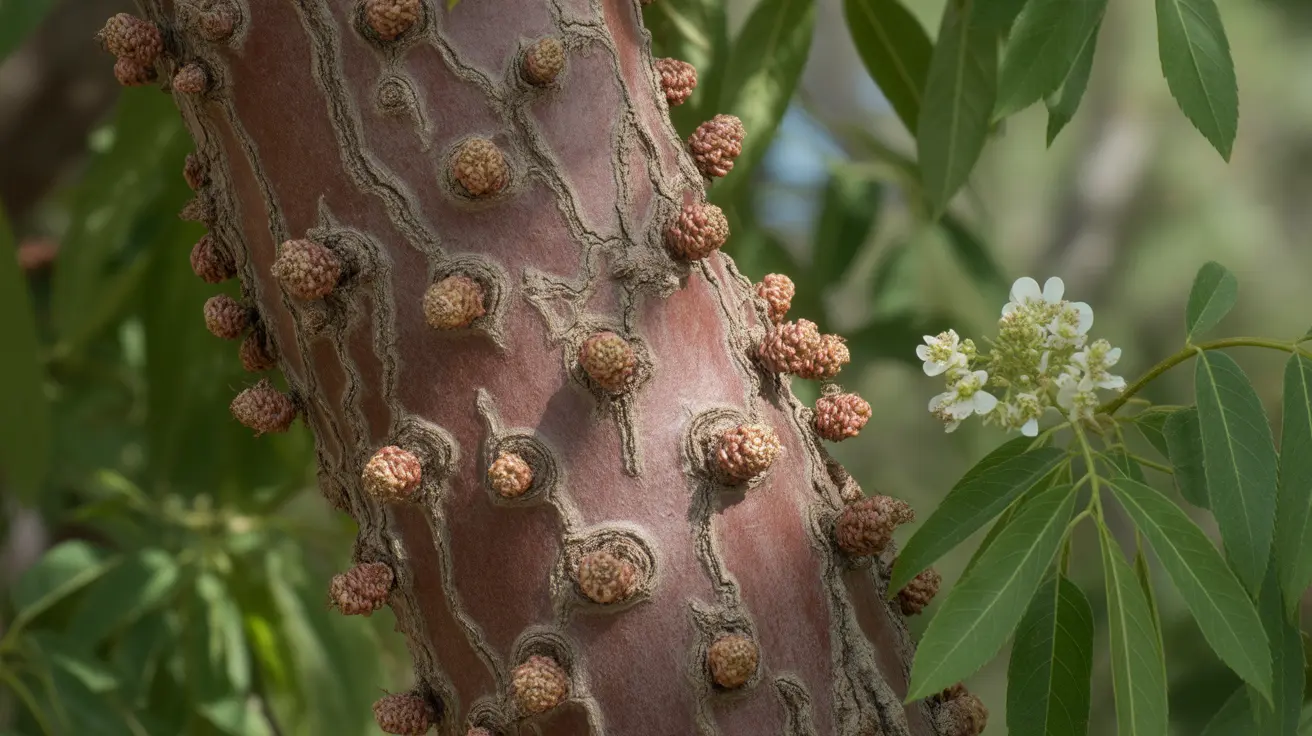Prickly ash bark, a traditional herbal remedy with deep roots in Native American medicine, has gained attention for its potential therapeutic properties. This comprehensive guide explores the benefits, uses, and important safety considerations of this fascinating medicinal bark.
Known for its unique compounds that create a tingling sensation when consumed, prickly ash bark has been historically used to address various health concerns, from digestive issues to circulation problems. Understanding its proper use and potential effects is crucial for anyone considering this natural remedy.
Understanding Prickly Ash Bark's Medicinal Properties
Prickly ash bark contains active compounds including alkaloids, tannins, and resins that contribute to its therapeutic effects. These natural chemicals are responsible for the bark's characteristic numbing and tingling sensation, which has earned it the nickname "toothache tree" in traditional medicine.
The bark's primary active compounds stimulate blood flow and promote circulation throughout the body, potentially benefiting various systems and organs. This increased circulation may help reduce inflammation and support overall healing processes.
Traditional and Modern Applications
Pain Management
Historically, prickly ash bark has been valued for its pain-relieving properties, particularly for:
- Toothache relief
- Joint and muscle discomfort
- Nerve-related pain
- Arthritis symptoms
Digestive Support
The bark has been traditionally used to support digestive health by:
- Stimulating digestive enzyme production
- Reducing gastrointestinal discomfort
- Supporting healthy appetite
- Alleviating occasional digestive distress
Preparation Methods and Dosage Guidelines
Prickly ash bark can be prepared in several ways for medicinal use:
- As a tincture (liquid extract)
- Steeped as a tea
- In powdered form for capsules
- As a topical preparation for external use
When using prickly ash bark preparations, it's essential to follow proper dosage guidelines and consult with a healthcare provider before beginning use. Starting with lower doses and gradually increasing as needed is typically recommended.
Safety Considerations and Contraindications
While prickly ash bark offers potential benefits, certain individuals should exercise caution or avoid its use entirely:
- Pregnant or nursing women
- People with bleeding disorders
- Individuals taking blood-thinning medications
- Those with certain chronic health conditions
Common side effects may include mild digestive upset, increased bleeding risk, and potential interactions with certain medications. Always discuss use with a healthcare provider before starting any new herbal remedy.
Frequently Asked Questions
What are the traditional and modern uses of prickly ash bark for pain and digestive issues?
Prickly ash bark has traditionally been used to alleviate toothaches, joint pain, and digestive problems. Modern applications include supporting circulation, reducing inflammatory pain, and helping with digestive discomfort. The bark's natural compounds provide both numbing and stimulating effects that can help with various types of pain and digestive concerns.
How does prickly ash bark work to relieve toothaches and improve circulation?
The active compounds in prickly ash bark create a numbing effect when applied locally, helping to temporarily relieve tooth pain. For circulation, its natural constituents stimulate blood flow by dilating blood vessels and promoting better circulation throughout the body.
What are the potential side effects and safety concerns when using prickly ash bark?
Common side effects include digestive upset, increased bleeding risk, and possible interactions with medications. The bark may also cause skin irritation when applied topically. It's important to monitor for adverse reactions and discontinue use if any concerning symptoms develop.
Who should avoid taking prickly ash bark and why is it not recommended during pregnancy?
Pregnant and nursing women should avoid prickly ash bark due to insufficient safety data and potential effects on uterine tissue. People with bleeding disorders, those taking blood thinners, and individuals with certain medical conditions should also avoid use. Always consult a healthcare provider before using this herb.
What is the recommended way to prepare and dose prickly ash bark for medicinal use?
Prickly ash bark can be prepared as a tea (1-2 teaspoons of bark per cup of water), tincture (20-40 drops, 1-3 times daily), or in capsule form (500-1000mg daily). Starting with lower doses and adjusting based on individual response is recommended. Always follow product-specific instructions and consult with a healthcare provider for personalized dosing guidance.




